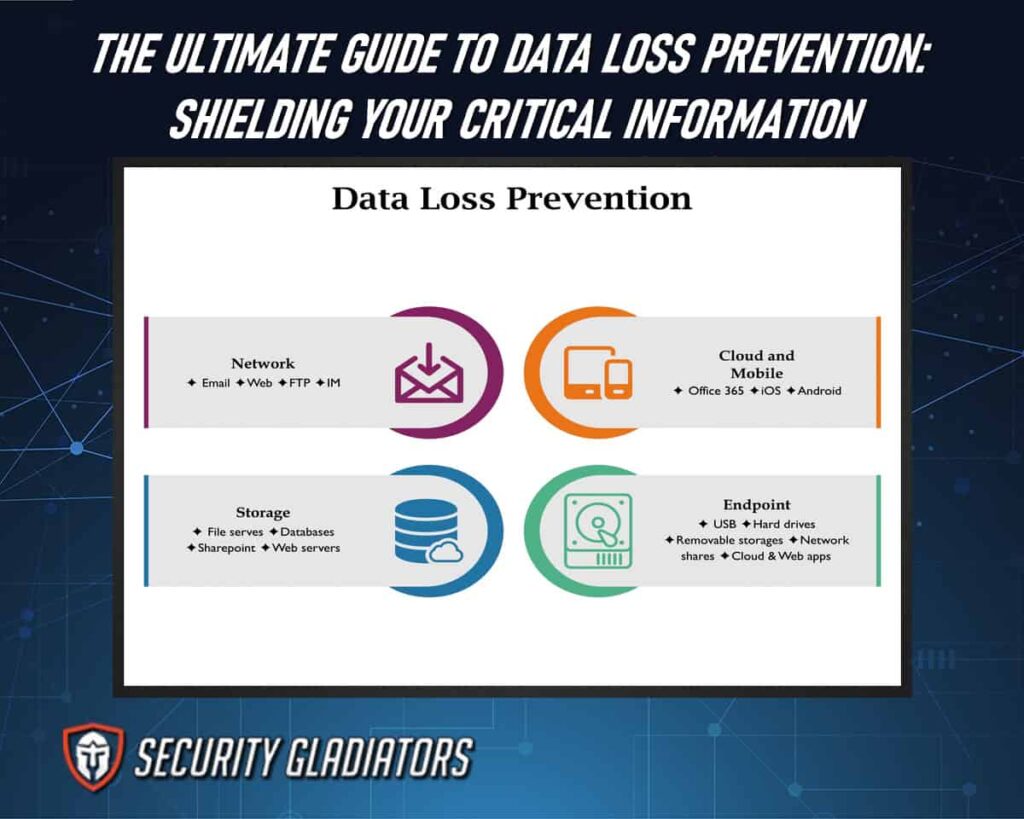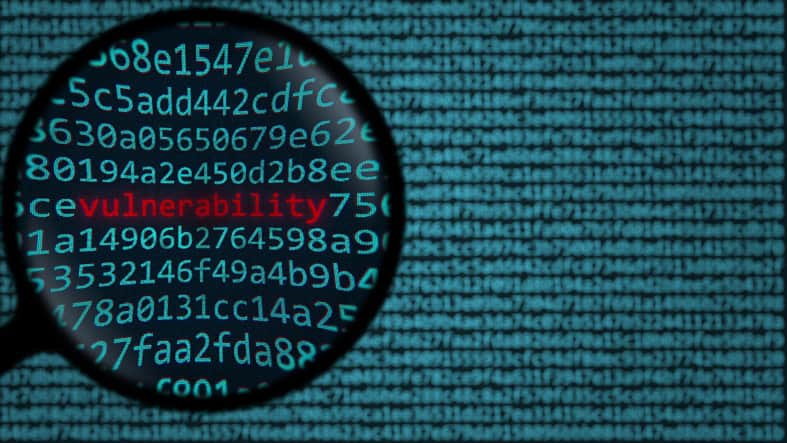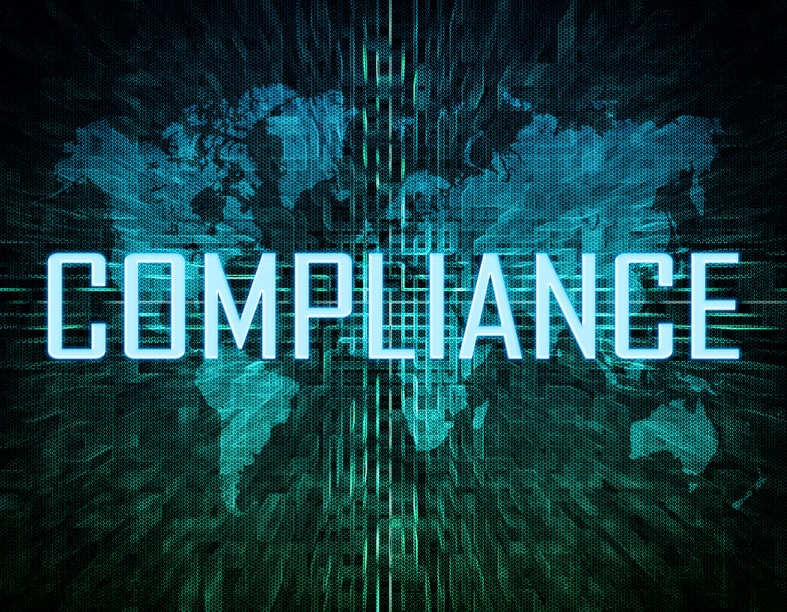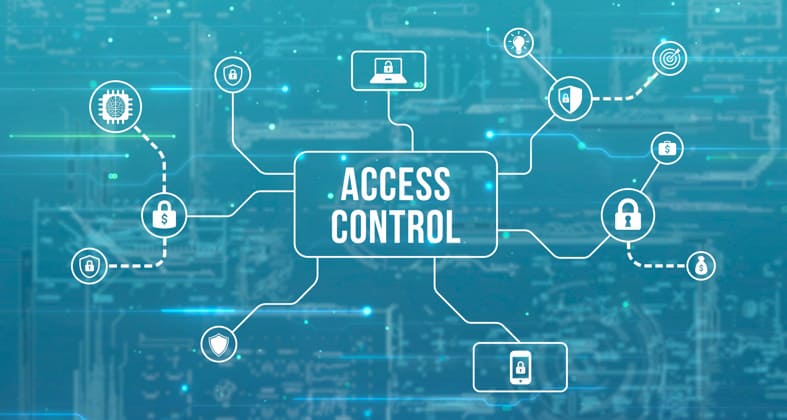The ultimate guide to data loss prevention aims to provide a comprehensive overview of DLP, its workings, and best practices that can help organizations shield their critical information effectively. This guide dives into the fundamental concept of DLP and how it operates within an organization’s infrastructure. It explores the various types of data threats that businesses face, including cyberattacks and malware, shedding light on the potential consequences they can have on an organization’s reputation and financial stability. Furthermore, we will look at the importance of improving visibility and control over sensitive data as a means to mitigate risks associated with data loss or leakage.

By addressing these key aspects in detail, this ultimate guide equips readers with valuable insights into DLP adoption and deployment strategies. It not only highlights best practices but also provides an objective analysis of different DLP solutions available in the market. By presenting a balanced perspective on controversial topics related to DLP implementation and its effectiveness, the guide empowers readers with knowledge that can assist them in making informed decisions about protecting their critical information. Enforcing measures and regulations for safeguarding data ensures that a company’s intellectual property remains inaccessible to unauthorized users.
Table of Contents
What Is Data Loss Prevention (DLP)?
Data loss prevention (DLP) is a paramount solution designed to safeguard vital information, evoking a sense of urgency and concern among organizations seeking to protect their data assets from potential breaches or unauthorized access. With the increasing volume and value of sensitive data in today’s digital age, businesses are constantly at risk of data breaches that can lead to significant financial losses, reputational damage, and legal consequences.
DLP solutions play a crucial role in mitigating these risks by implementing robust cybersecurity measures and policies aimed at preventing the accidental or intentional disclosure of business-critical data. These solutions employ various techniques such as encryption, access controls, monitoring tools, and user education to ensure the confidentiality, integrity, and availability of sensitive information across all stages of its lifecycle. By adopting DLP strategies, organizations can effectively combat the ever-evolving threats landscape and maintain control over their valuable data assets.
How Does DLP Work?
DLP systems operate by employing various mechanisms to detect, monitor, and control sensitive information within an organization’s digital environment. These systems utilize a combination of technologies such as content inspection, contextual analysis, and user behavior monitoring to identify critical data and ensure its security. Content inspection involves scanning files, emails, and other forms of data for specific patterns or keywords that may indicate the presence of sensitive information. Contextual analysis takes into account the context in which data is being accessed or shared to determine if it poses a risk. User behavior monitoring tracks the actions of individuals within the organization’s network to identify any suspicious or unauthorized activities that could result in data loss. By implementing these mechanisms, DLP systems provide organizations with effective means of protecting sensitive data and preventing its loss or leakage.
Types of Data Threats
Below are the major types of data threats:
Cyberattack
Cyberattacks pose a significant threat to organizations as they target vulnerabilities within digital systems, potentially causing extensive damage and compromising sensitive information. These attacks can result in data loss, intellectual property theft, financial losses, and reputational damage for the affected organization. Cybercriminals employ various techniques such as malware, phishing, ransomware, and denial-of-service attacks to gain unauthorized access to data and exploit weaknesses in security measures. The consequences of a successful cyberattack can be severe, with potential disruptions to business operations and financial stability.
Malware
Malware, malicious software designed to infiltrate and disrupt digital systems, can be likened to a stealthy intruder that silently penetrates the defenses of an organization’s network, potentially causing widespread damage and compromising sensitive data. To fully comprehend the gravity of the threat posed by malware, consider the following:
Evolving Sophistication
Malware is constantly evolving to bypass antivirus software and exploit vulnerabilities in operating systems and applications. Hackers use advanced techniques like polymorphism, encryption, and rootkits to make their malware more difficult to detect.
Data Leak Risks
Once inside a system, malware can initiate data leaks by exfiltrating sensitive information without detection. This poses significant risks for organizations as it compromises client confidentiality, tarnishes reputation, and may result in legal consequences.
Identification Challenges
Identifying sensitive data within an organization is crucial for effective data leak detection. However, with vast amounts of data generated daily by businesses, classifying data accurately becomes increasingly challenging. This complexity makes it easier for malware to target valuable information.
Need for Proactive Measures
Given the ever-present threat of malware attacks, organizations should implement comprehensive security measures such as regular software updates, user education on safe browsing habits, network segmentation protocols, and robust intrusion detection systems.
Insider Risks
Insider risks, often overlooked in discussions about data loss prevention (DLP), pose a significant threat to organizations’ critical information. While malware attacks receive considerable attention, insider threats can be just as devastating, if not more so. These risks involve employees or individuals within an organization who misuse their access privileges to intentionally or unintentionally compromise sensitive data.
Detecting and mitigating insider threats requires a robust DLP implementation that includes comprehensive policies and procedures. Organizations must implement monitoring systems capable of identifying unusual behavior patterns and unauthorized access attempts by employees. Additionally, strict enforcement of DLP policies is necessary to ensure that employees understand the consequences of mishandling sensitive information. By addressing insider risks through effective DLP measures, organizations can significantly reduce the likelihood of data breaches and safeguard their critical assets against internal threats.
Unintentional Exposure
Unintentional exposure to sensitive information can have severe consequences for organizations, highlighting the importance of robust data protection measures. Data loss prevention is crucial in safeguarding confidential and critical information from unintentional disclosure. Organizations must implement stringent data protection requirements to prevent unintentional exposure, as it can lead to significant financial losses, reputational damage, and legal implications. Unintentional exposure occurs when employees or authorized individuals accidentally share sensitive data through email, file-sharing platforms, or other communication channels. This type of data breach can occur due to human error, lack of awareness about security protocols, or inadequate training.
Note:
The risk of unintentional exposure is amplified when dealing with large volumes of data and complex IT environments. Moreover, cybercriminals may exploit these vulnerabilities to conduct data theft attacks by tricking employees into sharing sensitive information unknowingly. Therefore, organizations need to prioritize comprehensive training programs that educate employees about the proper handling and protection of sensitive information to minimize the risk of unintentional exposure.Phishing
Phishing attacks remain a prevalent cyber threat, targeting individuals and organizations through deceptive communication methods to gain unauthorized access to sensitive information. Phishing attempts often involve the impersonation of trusted entities, such as financial institutions or well-known brands, in order to deceive users into disclosing personal or confidential information. To combat this threat, data loss prevention software and solutions play a crucial role in safeguarding critical information. DLP data loss prevention software monitors and analyzes incoming and outgoing data traffic, identifying patterns that may indicate potential phishing attempts.
Why Is DLP Important?
One key reason why DLP is important is its role in ensuring regulatory compliance. Many industries are subject to strict regulations regarding data protection and privacy, such as healthcare with HIPAA or finance with PCI-DSS. By implementing DLP solutions, organizations can identify and classify sensitive data according to these regulations, enabling them to meet compliance requirements and avoid costly penalties.
Additionally, DLP provides organizations with enhanced data visibility, allowing them to understand where their critical information resides within their network infrastructure. This knowledge enables effective risk assessment and facilitates proactive measures to protect valuable assets from unauthorized access or leakage. Furthermore, a well-defined DLP strategy can help organizations streamline their incident response processes by establishing automated alerts and actions triggered by policy violations or suspicious activities.
Benefits of DLP solution
Here are four key benefits of using a DLP solution:
Data Classification
A crucial aspect of effective data loss prevention is accurately classifying sensitive information based on its level of confidentiality or criticality. A DLP solution offers automated classification mechanisms that analyze content to identify sensitive data such as Personally Identifiable Information (PII), financial records, or intellectual property. This classification enables targeted protection measures and ensures appropriate handling throughout its lifecycle.
Incident Response and Investigation
In the event of a security incident or suspected breach, a robust DLP solution provides detailed visibility into the nature and extent of the incident. It allows for efficient incident response by providing forensic analysis capabilities that help determine the cause of the breach and take necessary actions to prevent similar incidents in the future.
Detect and Block Suspicious Activity
Detecting and blocking suspicious activity is a crucial step in safeguarding sensitive information, as it provides organizations with a visual representation of potential threats and enables them to take immediate remedial actions. By implementing robust systems that filter data streams and continuously monitor data, organizations can effectively identify any unusual or unauthorized activities within their network. This proactive approach allows them to block access to suspicious entities before they gain access to critical information.

Additionally, these systems often come equipped with advanced reporting capabilities, which enable organizations to generate detailed reports on detected threats and analyze patterns of suspicious behavior. This not only helps in identifying potential vulnerabilities but also aids in strengthening the overall security posture of the organization.
Maintain Regulatory Compliance
Maintaining regulatory compliance is crucial for organizations to ensure adherence to legal requirements and industry standards, safeguarding their operations and reputation in an ever-evolving regulatory landscape. In the context of data loss prevention, maintaining regulatory compliance involves implementing measures for protecting data stored within corporate networks. Organizations need to establish robust protocols for securing data, including encryption methods, access controls, and regular audits to monitor data storage practices. Failure to comply with regulations can result in severe consequences such as financial penalties or damage to a company’s brand image.

Monitor Data Access and Usage
Monitoring data access and usage is essential in ensuring the security and confidentiality of sensitive information within an organization’s networks. By implementing a robust data loss prevention (DLP) strategy, companies can effectively safeguard their critical data from unauthorized access or misuse. To achieve this, organizations should consider employing various DLP techniques such as network DLP, cloud DLP, endpoint DLP, and mobile device monitoring. Network DLP involves monitoring and analyzing data streams flowing through the network to detect any suspicious activities or potential breaches. Cloud DLP focuses on securing data stored in cloud environments by implementing encryption, access controls, and real-time monitoring. Endpoint DLP aims to protect data accessed or stored on individual devices such as laptops or smartphones by enforcing security policies and monitoring user behavior.

Lastly, mobile device monitoring helps organizations track and manage the flow of sensitive information on mobile devices to prevent any unauthorized leaks or breaches. Incorporating these techniques into a comprehensive monitoring system allows organizations to proactively identify potential threats and take necessary actions to mitigate risks before they escalate into major incidents.
Improve Visibility and Control
Improving visibility and control entails implementing robust monitoring systems that allow security teams to closely monitor data access and usage. By doing so, organizations can identify potential vulnerabilities and proactively respond to any suspicious activities or unauthorized attempts to access sensitive data. Additionally, enhancing visibility and control involves adopting a comprehensive DLP program that encompasses not only traditional endpoints but also extends to mobile phones and consumer cloud storage services.
Note:
This ensures that all avenues through which data can be compromised are effectively addressed. With an increased emphasis on visibility and control, organizations can mitigate the risks associated with data breaches, minimize the impact of potential incidents, and safeguard their critical information effectively.DLP Adoption and Deployment
DLP (Data Loss Prevention) adoption and deployment refers to the process of implementing and using DLP solutions within an organization to protect sensitive data from being lost, stolen, or misused.
Here are the steps involved in DLP adoption and deployment:
- Identify and classify the sensitive data that needs protection. This could include personally identifiable information (PII), financial records, intellectual property, trade secrets, etc.
- Understand the specific requirements and compliance regulations applicable to the organization. This could include industry-specific regulations like HIPAA (Health Insurance Portability and Accountability Act) or GDPR (General Data Protection Regulation).
- Evaluate and select a DLP solution that aligns with the organization’s needs and requirements. Consider factors like data discovery capabilities, data classification, policy enforcement, incident response, etc.
- Establish DLP policies that define how sensitive data should be handled, stored, and transmitted. These policies should outline rules and actions to be taken when violations occur.
- Configure the DLP solution to enforce policies and integrate it with existing systems and infrastructure. This may involve configuring network monitoring, email scanning, endpoint protection, and other components.
- Conduct thorough testing to ensure that the DLP solution is working as intended. Validate that policies are correctly enforced and that sensitive data is adequately protected.
- Educate employees about the importance of data protection, DLP policies, and how to handle sensitive data securely. Training should cover best practices, potential risks, and how to report incidents.
- Deploy the DLP solution across the organization, monitoring data flows, and enforcing policies in real-time. Regularly monitor and analyze DLP logs and reports to identify any potential security incidents or policy violations.
- Establish a process for responding to and resolving DLP incidents. This may involve investigating incidents, taking appropriate actions, and implementing measures to prevent similar incidents in the future.
- Regularly review and update DLP policies and configurations as new threats and regulations emerge. Stay up-to-date with the latest DLP technologies and industry best practices to enhance data protection.
DLP Best Practices
Here are the optimal Approaches for Data Loss Prevention (DLP):
Data Identification and Classification
Begin by identifying and categorizing sensitive data within your organization. Understanding your data is crucial for effective protection.
Data Encryption
Implement encryption for data both at rest and in transit. This ensures that even if unauthorized parties gain access, the data remains unreadable.
System Security
Strengthen your network’s security by addressing its weakest points. Limit access to authorized personnel only and provide access on a need-to-know basis.
Phased Implementation
Roll out DLP measures in phases. Prioritize areas of vulnerability and conduct pilot tests. Gradually integrate DLP solutions and their benefits into your organization.
Patch Management
Develop a strategy for managing patches across your infrastructure. Thoroughly test all updates to prevent introducing vulnerabilities.
Role Allocation
Define roles and responsibilities clearly. Designate individuals accountable for various aspects of data security within your organization.
Automation
Embrace automation to enhance the scope and scalability of your DLP procedures. Manual efforts alone can be limiting in addressing future demands.
Anomaly Detection
Harness machine learning and behavioral analytics for anomaly detection. This aids in identifying irregular patterns that could signify potential data breaches.
DLP solutions
Implementing effective DLP solutions involves deploying robust technologies and tools that can identify, monitor, and control the flow of sensitive data within an organization’s network infrastructure. To ensure the protection of critical information, organizations must consider various DLP solutions available in the market. These solutions offer a range of features designed to safeguard data from unauthorized access, leakage, or theft.
Here are four key aspects to consider when selecting DLP solutions:
Data Classification
DLP solutions should provide automated mechanisms for classifying data based on its sensitivity level. This enables organizations to prioritize their efforts in protecting critical information by focusing on high-risk data.
Content Monitoring
Effective DLP solutions employ content monitoring techniques such as keyword matching, regular expression patterns, and machine learning algorithms to detect and prevent unauthorized sharing of sensitive information.
Endpoint Protection
Organizations need comprehensive endpoint protection capabilities that can monitor and control data transfers between endpoints (such as laptops and mobile devices) and external networks. This ensures that even if a device is compromised or lost, critical information remains secure.
Incident Response
A robust incident response mechanism is crucial for the timely detection and mitigation of potential data breaches. DLP solutions should include features like real-time alerts, forensic analysis tools, and incident tracking systems to facilitate prompt action against any security incidents.
Frequently Asked Questions
What Are Some Common Challenges or Obstacles Organizations Face When Implementing a Dlp Solution?
One of the common hurdles is the complexity of integrating DLP systems into existing IT infrastructure. This process often requires significant technical expertise and resources to ensure seamless integration without disrupting normal business operations. Moreover, another challenge lies in striking the right balance between security and employee privacy. Organizations need to establish clear policies and guidelines regarding what constitutes acceptable use of corporate data while respecting individual privacy rights. Additionally, ensuring effective user adoption and compliance with DLP measures can be challenging. Employees may resist or forget to follow proper protocols, undermining the effectiveness of the system. Lastly, cost considerations can pose obstacles as implementing a comprehensive DLP solution can involve significant financial investment for software licenses, hardware upgrades, staff training, and ongoing maintenance.
Is Dlp Only Relevant for Large Organizations, or Can Small Businesses Also Benefit From Implementing DLP?
Data Loss Prevention (DLP) is not solely relevant for large organizations; it can also greatly benefit small businesses. While the implementation of DLP solutions may appear more feasible for larger companies due to their greater resources, small businesses face similar data security risks and need to protect their critical information as well. In fact, small businesses are often targeted by cybercriminals who exploit vulnerabilities in their systems. Implementing DLP measures can help mitigate these risks by identifying sensitive data, monitoring its movement within the organization, and preventing its unauthorized disclosure or loss.
Moreover, DLP solutions provide valuable insights into data usage patterns and potential threats, enabling proactive security measures that are crucial for businesses of any size. By adopting DLP strategies early on, small organizations can safeguard their sensitive information effectively and avoid costly consequences resulting from breaches or data loss incidents.
Can DLP Solutions Detect and Prevent Data Loss Through Cloud-Based Storage or Applications?
DLP solutions have the capability to detect and prevent data loss through cloud-based storage or applications. With the increasing reliance on cloud services for data storage and application usage, it is imperative to implement robust security measures to safeguard critical information. DLAP solutions can monitor and analyze data transfers, access patterns, and user behavior within cloud environments, enabling organizations to identify potential vulnerabilities and take proactive steps to prevent data loss. These solutions employ various techniques such as encryption, access controls, activity monitoring, and anomaly detection to protect sensitive data from unauthorized access or leakage.
Are There Any Specific Industry Regulations or Compliance Requirements That Necessitate the Use of DPL?
Yes, there are specific industry regulations and compliance requirements that necessitate the use of Data Loss Prevention (DLP) solutions. In today’s digital landscape, organizations handle vast amounts of sensitive data, such as personally identifiable information (PII), financial records, and intellectual property. Consequently, various industries have implemented regulatory frameworks to ensure the protection and privacy of this critical information. For instance, the healthcare sector adheres to the Health Insurance Portability and Accountability Act (HIPAA), which mandates safeguards for patient data security. Similarly, financial institutions comply with regulations like the Payment Card Industry Data Security Standard (PCI DSS) to prevent unauthorized access or leakage of credit card information. Additionally, governmental organizations often require stringent data protection measures as part of their national security protocols. By implementing DLP solutions, organizations can effectively address these industry regulations and compliance requirements by preventing data breaches and minimizing potential risks associated with data loss or unauthorized access.
Conclusion
Implementing effective DLP strategies is vital for shielding critical information from various threats faced by organizations today. By understanding the types of data threats they may encounter and adopting appropriate DLP solutions aligned with best practices, businesses can safeguard their valuable assets against cyberattacks and malware attacks. Enhancing visibility and control over sensitive information helps mitigate risks associated with data loss incidents while ensuring compliance with regulatory requirements. Ultimately, prioritizing data loss prevention enables organizations to protect their reputation and maintain trust among stakeholders in an increasingly digital landscape.

